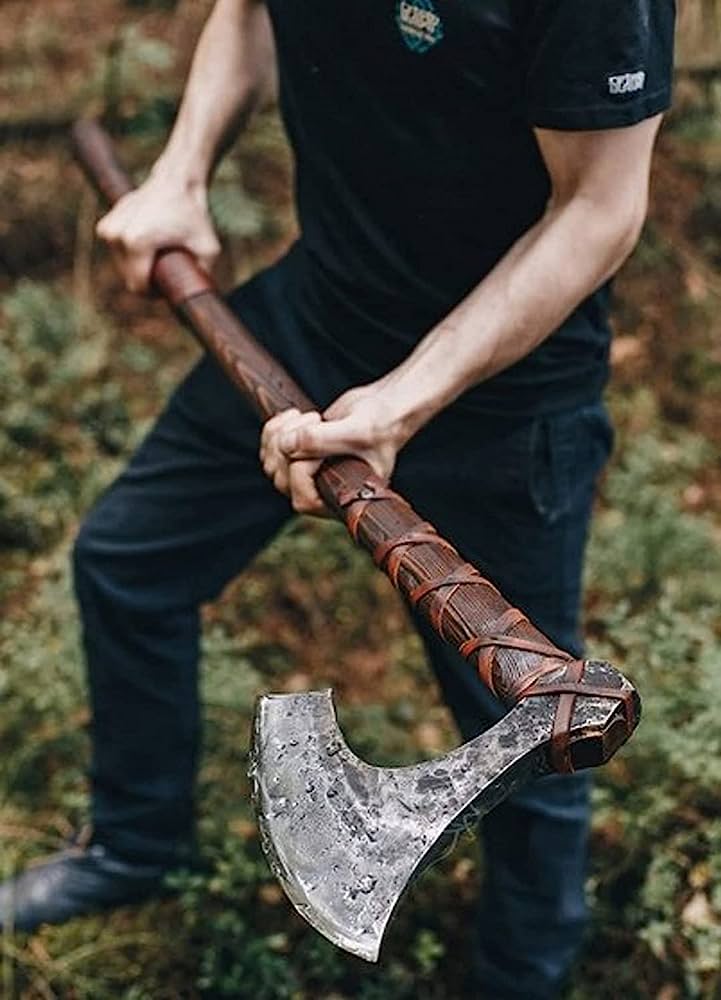Weaponry Fit for a Hero – Invest in a Hand-Forged Viking Battle Axe
The Viking battle axe stands as an emblem of power, authority, and ancestral legacy in the chieftain’s world. As a weapon of choice and a symbol of stature, the axe held immense cultural and social significance among the Vikings, serving as a tangible representation of leadership and dominance. In the harsh and unforgiving landscapes of the Viking Age, survival depended on strength and resourcefulness. The battle axe, with its formidable blade and versatile design, emerged as a crucial tool for both combat and daily life. This duality of purpose mirrored the chieftain’s multifaceted role as both a warrior and a leader responsible for the welfare of the community. The axe, then, was more than just a weapon it was an extension of the chieftain’s identity, embodying the fusion of martial skill and governance. Craftsmanship was revered in Viking culture, and the creation of a battle axe was a laborious and meticulous process. Master blacksmiths poured their skill and dedication into forging these weapons, imbuing them with both physical excellence and symbolic value.

The elaborate designs etched onto the axe’s head often held intricate stories, mythological references, or representations of the chieftain’s lineage. Wielding an axe of such craftsmanship was a testament to the chieftain’s ability to command the finest artisans, underscoring their status as a figure of authority. The act of bestowing Handgeschmiedete Äxte upon a chieftain held deep ceremonial significance. It was not merely the exchange of a weapon, but a symbolic transfer of power and allegiance. The giver, be it a fellow warrior or a respected elder, acknowledged the chieftain’s leadership role and pledged their unwavering loyalty. This ritualistic gesture solidified the chieftain’s place at the apex of the social hierarchy, reinforcing the idea that their authority was sanctioned by both mortal and divine forces. In the turbulent context of Viking society, conflict and conquest were a way of life. Tales of victorious chieftains and their mighty axes reverberated throughout the sagas, immortalizing their feats and reinforcing the connection between the leader and their weapon.
Chieftains led their warriors into battle, and the axe became an emblem of their martial prowess. The axe’s cleaving power on the battlefield mirrored the chieftain’s ability to cleave through obstacles and challenges within their community. The Viking battle axe also transcended the earthly realm, intertwining with spiritual beliefs. The strong link between weapons and the divine was a central aspect of Norse cosmology. The axe, as a conduit between the mortal and the supernatural, further elevated the chieftain’s standing. It was not uncommon for chieftains to commission intricate burials, accompanied by their cherished weapons, reflecting a belief in an afterlife where their authority would persist. Its craftsmanship, ceremonial bestowal, and role on the battlefield converged to create a symbol that encapsulated the essence of chieftainship. The Viking battle axe, as a tangible representation of authority, resonated deeply within the cultural tapestry of the Norse people, perpetuating the legacy of legendary chieftains through generations and leaving an indelible mark on history.